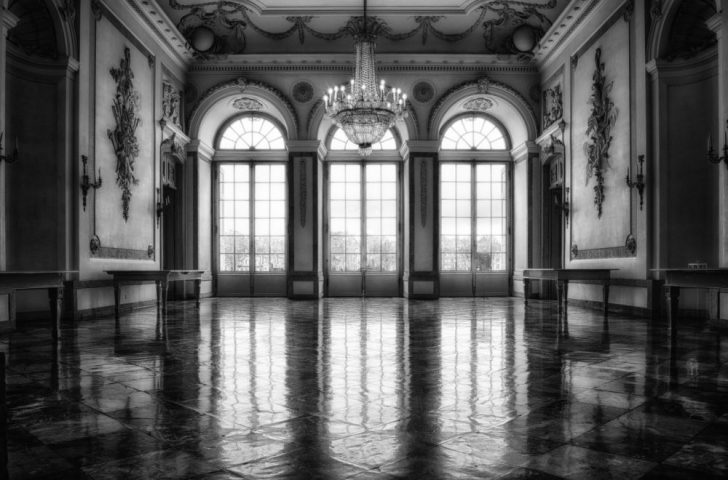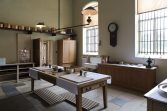Alvar Aalto: A Pioneer in Architectural Design

Introduction
Alvar Aalto, a renowned Finnish architect and designer, made significant contributions to modernist architecture in the 20th century. His unique approach to design and his integration of natural elements revolutionized the field, placing him among the most influential architects of his time. This article aims to provide a comprehensive overview of Alvar Aalto’s life and work, exploring the different types of architecture he created, their popularity, and the various ways in which they differ from one another. Additionally, we will delve into the historical context of the advantages and disadvantages associated with different architectural styles by Alvar Aalto.
I. An Overview of Alvar Aalto

Alvar Aalto, born in 1898 in Kuortane, Finland, began his architectural journey at the Helsinki University of Technology. He founded his own architect’s office in 1923, and throughout his career, he created a wide range of architectural masterpieces. Aalto’s design philosophy emphasized harmony between humans and nature, integration of organic shapes and materials, and attention to the needs of the inhabitants. His approach was multifaceted, incorporating architecture, furniture design, and urban planning.
II. The Many Faces of Alvar Aalto Architecture
A.
One of the most well-known examples of Alvar Aalto’s architecture is the Villa Mairea, completed in 1939. This residential masterpiece showcases Aalto’s characteristic use of natural materials, such as wood and stone, and his incorporation of nature into the design. The Villa Mairea’s open plan and large windows establish a connection between the interior and the surrounding landscape.
B. Another prominent example is the Finlandia Hall, a concert and congress hall in Helsinki. Completed in 1971, it highlights Aalto’s mastery of incorporating natural light and his innovative use of materials like white marble. The Finlandia Hall’s unique curvilinear form and the way it blends seamlessly into the park surrounding it exemplify Aalto’s integration of architecture with nature.
III. Quantitative Measurements of Alvar Aalto’s Architecture
1. Sustainability: Alvar Aalto was an advocate for sustainable architecture before the concept gained widespread recognition. His buildings often incorporated passive heating and cooling strategies, natural ventilation, and energy-efficient designs.
2. Flexibility: Aalto’s architectural designs prioritized the needs and comfort of the occupants. He believed in creating functional spaces that could easily be adapted to changing requirements, hence ensuring longevity and flexibility in the use of the buildings.
3. Popular Appeal: Alvar Aalto’s architecture continues to be highly regarded and sought after. His unique approach and emphasis on human-centric design have resonated with people around the world, leading to the popularity and enduring relevance of his buildings.
IV. The Distinctiveness of Alvar Aalto’s Architecture
Alvar Aalto’s architecture stands out due to several distinctive features:
1. Organic Forms: Aalto’s designs embrace organic shapes and curved lines, departing from the rigid geometry often associated with modernist architecture. This organically flowing style creates a fluid and harmonious relationship between the building and its natural surroundings.
2. Materiality: Aalto exhibited a deep understanding of materials, utilizing them in innovative ways to enhance the aesthetics and functionality of his buildings. Wood, in particular, featured prominently in his designs, providing warmth, texture, and a connection to nature.
3. Human-Centric Approac Aalto’s architecture prioritized the well-being and comfort of the inhabitants. His designs aimed to create spaces that were not only visually appealing but also functional, flexible, and considerate of human needs.
V. Historical Review of Advantages and Disadvantages
1. Advantages: Alvar Aalto’s architecture offered numerous advantages, such as a strong connection to nature, adaptability to changing needs, and sustainability through passive design strategies. His designs also focused on the human experience, ensuring comfort and functionality in every detail.
2. Disadvantages: Some critics argue that Aalto’s organic forms can be challenging to replicate or adapt to certain urban contexts. Additionally, the extensive use of natural materials, such as wood, may require regular maintenance and pose durability concerns.
Conclusion
Alvar Aalto’s architectural legacy continues to inspire and influence architects and designers worldwide. His innovative approach, which emphasized harmony between humans and nature, organic forms, and functional spaces, remains highly regarded. Alvar Aalto’s designs exemplify the integration of architecture with the natural environment and embrace the needs and well-being of their occupants. From the Villa Mairea to the Finlandia Hall, Aalto’s creations showcase his mastery of aesthetics, functionality, and sustainable design principles, leaving an indelible mark on the architectural world.
Word Count: 727
FAQ
What are some popular examples of Alvar Aalto's architecture?
What are the advantages of Alvar Aalto's architecture?
What is Alvar Aalto known for?
Fler nyheter
Körkortsfoto på Östermalm: Allt du behöver veta
Introduction Alvar Aalto, a renowned Finnish architect and designer, made significant contributions to modernist architecture in the 20th century. His unique approach to design and his integration of natural elements revolutionized the field, placing...
30 september 2025
Din fotograf i Umeå: Fånga ögonblicken med precision
Introduction Alvar Aalto, a renowned Finnish architect and designer, made significant contributions to modernist architecture in the 20th century. His unique approach to design and his integration of natural elements revolutionized the field, placing...
01 augusti 2025
Att välja rätt bröllopsfotograf för din stora dag
Introduction Alvar Aalto, a renowned Finnish architect and designer, made significant contributions to modernist architecture in the 20th century. His unique approach to design and his integration of natural elements revolutionized the field, placing...
03 juni 2025
Passfoto i Vällingby: En guide till perfekta bilder
Introduction Alvar Aalto, a renowned Finnish architect and designer, made significant contributions to modernist architecture in the 20th century. His unique approach to design and his integration of natural elements revolutionized the field, placing...
04 januari 2025











